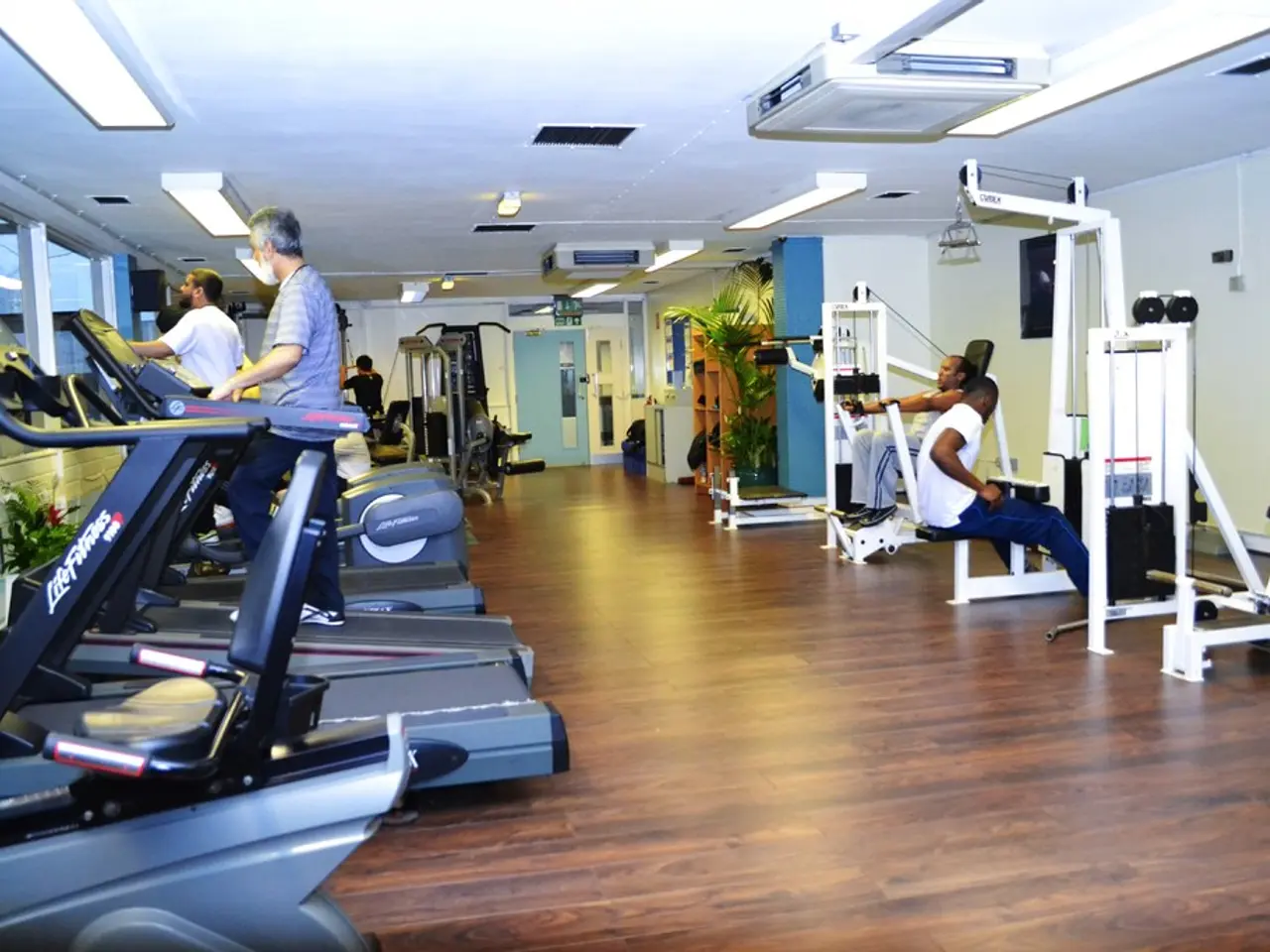Addressing Seismic Disturbances
In the battle against Parkinson's disease, exercise has emerged as a powerful ally. A range of exercises has been found to help reduce tremors, a common symptom of the condition, and improve the quality of life for those affected.
One such exercise is Punching, a self-exercise that involves making fists and throwing punches with force, speed, and power. Hand Flicks, another self-exercise, involves using a full range of motion with hands to help reduce tremors. Wrist Flexion and Extension exercise, where one bends the wrist up and down 10 times per hand, and Finger Tapping exercise, where each finger is tapped to the thumb in order, ten times on each hand, are also effective.
Progressive Muscle Relaxation exercise, performed in a sequence from toes to face, involves tensing and then releasing each muscle group. This exercise, when held for five seconds before being released and accompanied by deep breaths, can help reduce tremors.
Balance Exercises, such as Grounding exercise where one pushes open hands into knees and pushes legs into the ground while taking deep breaths, target the muscles and neural pathways responsible for maintaining stability and coordination, reducing the risk of falls and improving control over involuntary shaking.
Aerobic Exercise, including walking, swimming, or cycling, improves cardiovascular and brain health, which supports motor function and may help mitigate tremors. Stretching and Flexibility Work eases muscle stiffness and improves range of motion, which often exacerbates tremors in Parkinson’s.
Rhythmic and Coordination Drills train brain-body communication, potentially reducing tremor severity by enhancing neural pathways involved in smooth movement. Mind-Body Exercises like Tai Chi and Yoga incorporate balance, flexibility, and relaxation elements that reduce stress and improve motor function, which can diminish tremor episodes.
Gait Training focuses on improving walking mechanics, increasing stride length, and posture, which can indirectly reduce tremor impact on mobility. Physical Therapy, customized exercise programs designed by physical therapists, can target specific symptoms such as tremors, stiffness, and balance deficits to improve overall motor control and quality of life.
A varied exercise routine, mixing aerobic, strength, balance, and flexibility training throughout the week, is recommended to comprehensively address symptoms and optimize benefits. For those able, higher-intensity exercise regimens may slow disease progression and improve symptom control, including tremors.
Consistent, purposeful daily exercise—tailored to an individual’s abilities and stage of Parkinson’s—is essential for managing tremors and other motor symptoms. Starting with manageable activities and progressively increasing complexity and intensity can yield significant functional gains and possibly reduce tremor severity over time.
In conclusion, engaging in these exercises regularly, ideally under professional guidance, can help Parkinson’s patients reduce tremors and enhance overall mobility and quality of life. The table below summarises the exercise strategies for reducing tremors in Parkinson’s:
| Exercise Type | Benefits for Tremor Reduction | |------------------------|---------------------------------------------------------| | Strength Training | Improves muscle control and postural support | | Balance Exercises | Enhances stability, reduces fall risk | | Aerobic Exercise | Boosts brain and cardiovascular health | | Stretching/Flexibility | Reduces stiffness, improves movement fluidity | | Coordination Drills | Trains neural control, improves motor coordination | | Tai Chi/Yoga | Combines relaxation and motor control | | Gait Training | Improves walking pattern and motor planning | | Physical Therapy | Personalized approach targeting multiple symptoms | | High-Intensity Exercise| Potentially slows progression, improves symptom control |
- Apart from exercise being a significant ally in the fight against Parkinson's disease, Punching, Hand Flicks, Wrist Flexion and Extension, and Finger Tapping exercises are self-exercises that help reduce tremors, a common symptom of the condition.
- Progressive Muscle Relaxation, performed from toes to face in a sequence, is another exercise that can help reduce tremors by tensing and then releasing each muscle group for five seconds, accompanied by deep breaths.
- In addition to strengthening exercises, Balance Exercises such as Grounding help target the muscles and neural pathways responsible for maintaining stability and coordination, reducing the risk of falls and improving control over involuntary shaking.
- Beyond improving cardiovascular and brain health with Aerobic Exercise, activities like Tai Chi and Yoga, which incorporate balance, flexibility, and relaxation elements, can reduce stress and improve motor function, potentially diminishing tremor episodes.




